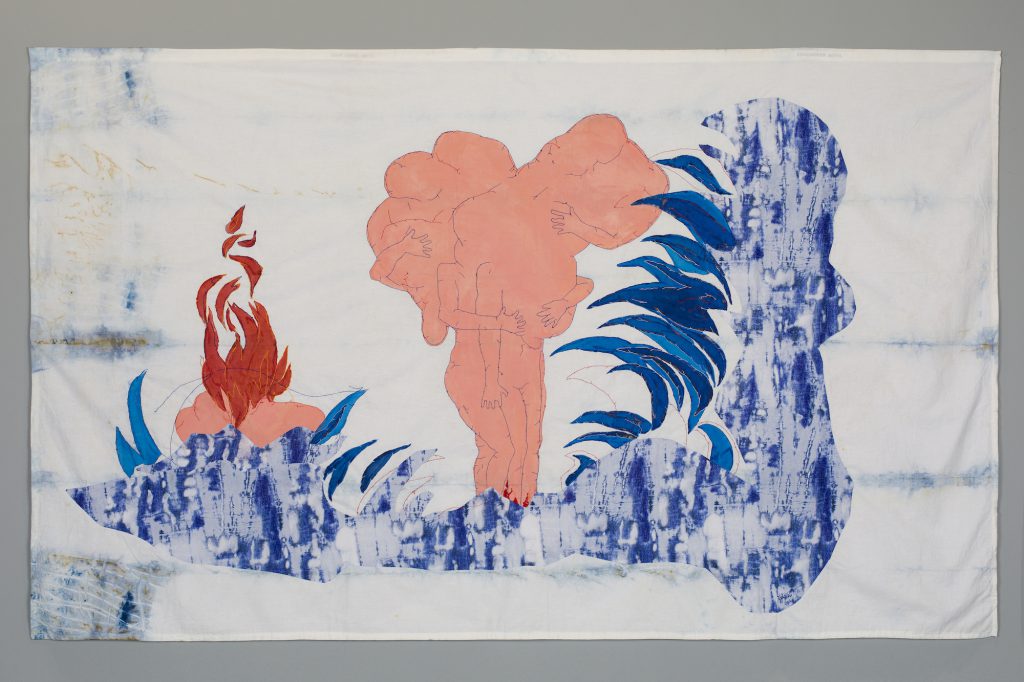Who am I Gaia? I am a place.
I am a piece of you where the winged don’t fly,
Where the bones don’t crumble,
Where the clawed don’t scratch.
And I am many things that have witnessed the awakening of seeds within some feminine passage.
I am the emerald at the root of stone, and I am the thread in the tissue of ginger
— Sema Kaygusuz
Gözde Ilkin collects used textiles from domestic environments and transforms them into tools for memory and material archives of their social processes and cultural contexts. Combining embroidery, painting, collage, natural dyes, and audiovisual components, the artist considers the fabrics “stages” for her elusive visions of fantastic beings that transcend human, animal, and plant categories and allow her to question power relations, gender attitudes, and urban transformations. Suspended from the ceiling, As the Roots Spoke, the Cracks Deepen (2019–20) continues Ilkin’s engagement with plant intelligence, an acknowledgment of symbiotic forms of interspecies coexistence.
The project began in Vitry-sur-Seine, an ethnically diverse neighborhood in the southeastern suburbs of Paris, where the artist sought the fleeting presence of plants in urban isolation. Transplanted to Jungoe Park, the largest leisure and cultural area in Gwangju, new site-responsive works turn the focus to the power of healing and transformation that plants assume as integral parts of shamanic rituals. The installation is accompanied by a sound environment whispering a prayer by Sema Kaygusuz, an ecofeminist author known for her critiques of the Turkish politics of ethnic and religious homogenization. Both Ilkin and Kaygusuz challenge the concept of roots as defined by national and religious affiliations and interpret them as natural and imaginary bonds passed down through generations. Evoking the refuge of rural environments, the politics of land in Anatolia and Mesopotamia, and theories of the migration of souls in the service of the reclamation of culture, Kaygusuz’s verses suffuse the work with an underlying political dimension.
The bed sheets, curtains, and tablecloths—sewn, stitched, and collaged by Ilkin and her mother—blend various ancestral knowledges of materials and techniques. The radiant colors are extracts of medicinal and ceremonial plants, like the blue woad, one of the first known natural dyes, or the yellowish brown of peganum harmala, valued for its hallucinogenic effects. In Gwangju, the hibiscus that leaves its deep pink mark on The Entrustment Shaman (2020) is more commonly referred to as the Korean rose, a symbol of the South Korean people and their land. By weaving together meanings from different cultures, each piece becomes a story, dwelling in the interstitial spaces between plants and humans, mourning and birth, the dead and the living.
Krisztina Hunya

